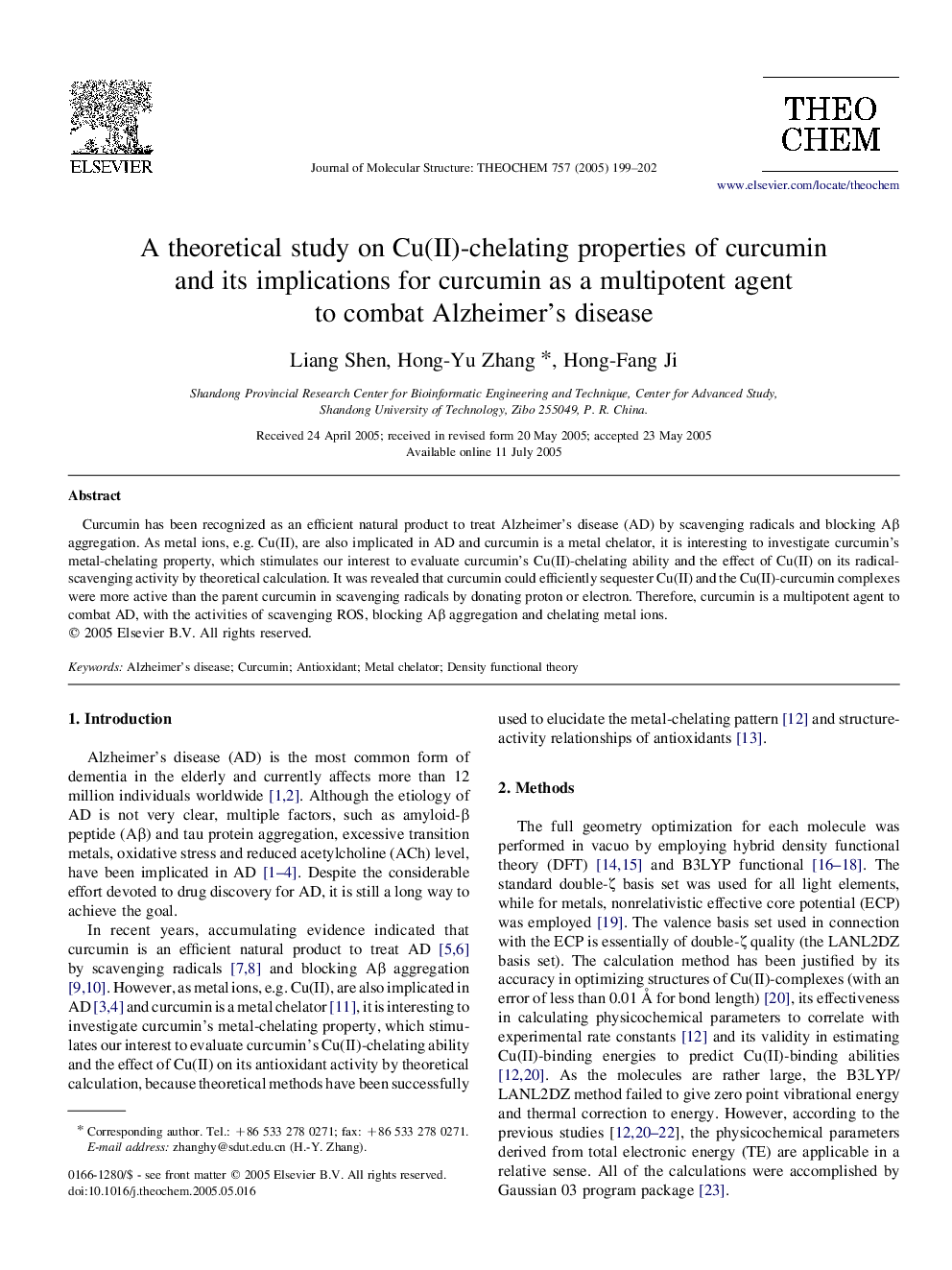| Article ID | Journal | Published Year | Pages | File Type |
|---|---|---|---|---|
| 9590641 | Journal of Molecular Structure: THEOCHEM | 2005 | 4 Pages |
Abstract
Curcumin has been recognized as an efficient natural product to treat Alzheimer's disease (AD) by scavenging radicals and blocking Aβ aggregation. As metal ions, e.g. Cu(II), are also implicated in AD and curcumin is a metal chelator, it is interesting to investigate curcumin's metal-chelating property, which stimulates our interest to evaluate curcumin's Cu(II)-chelating ability and the effect of Cu(II) on its radical-scavenging activity by theoretical calculation. It was revealed that curcumin could efficiently sequester Cu(II) and the Cu(II)-curcumin complexes were more active than the parent curcumin in scavenging radicals by donating proton or electron. Therefore, curcumin is a multipotent agent to combat AD, with the activities of scavenging ROS, blocking Aβ aggregation and chelating metal ions.
Related Topics
Physical Sciences and Engineering
Chemistry
Physical and Theoretical Chemistry
Authors
Liang Shen, Hong-Yu Zhang, Hong-Fang Ji,
